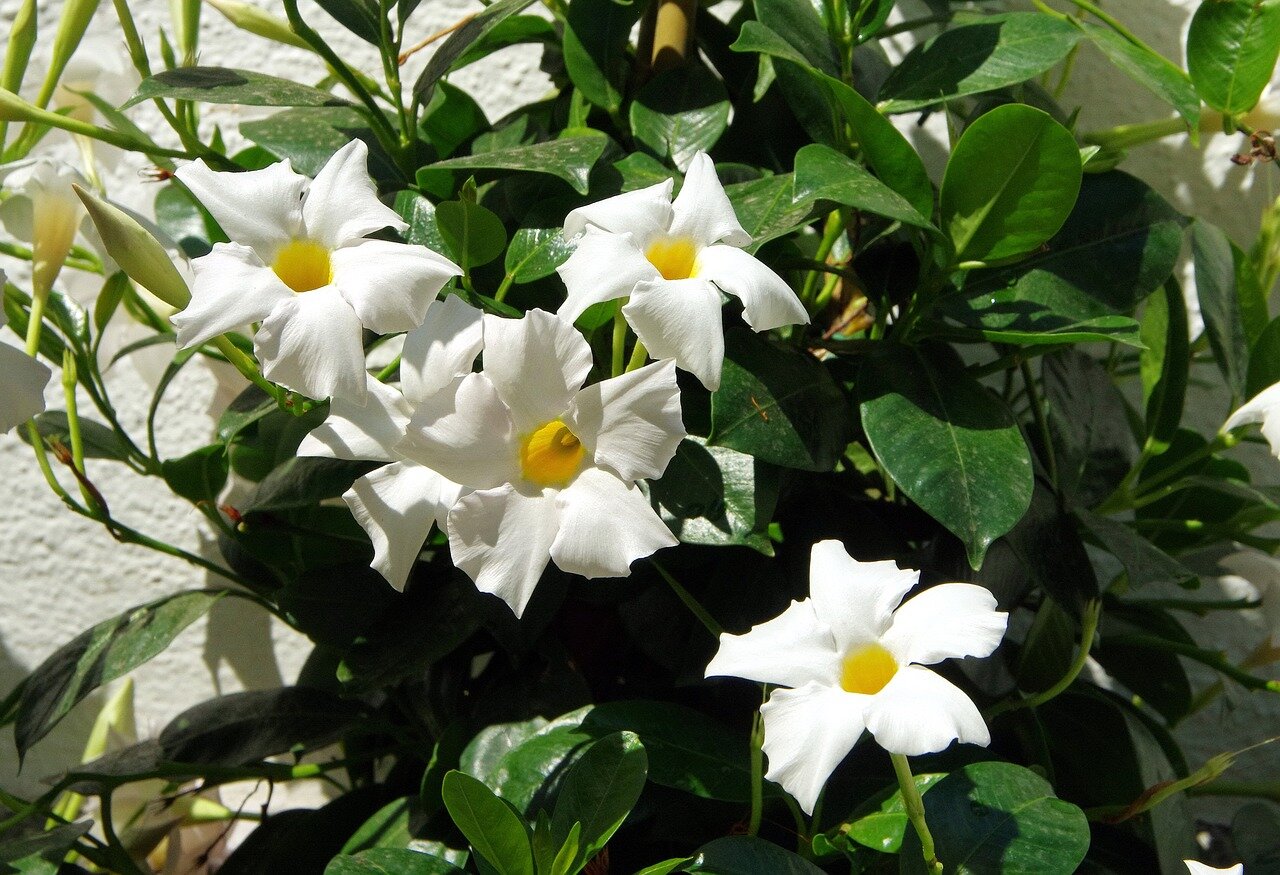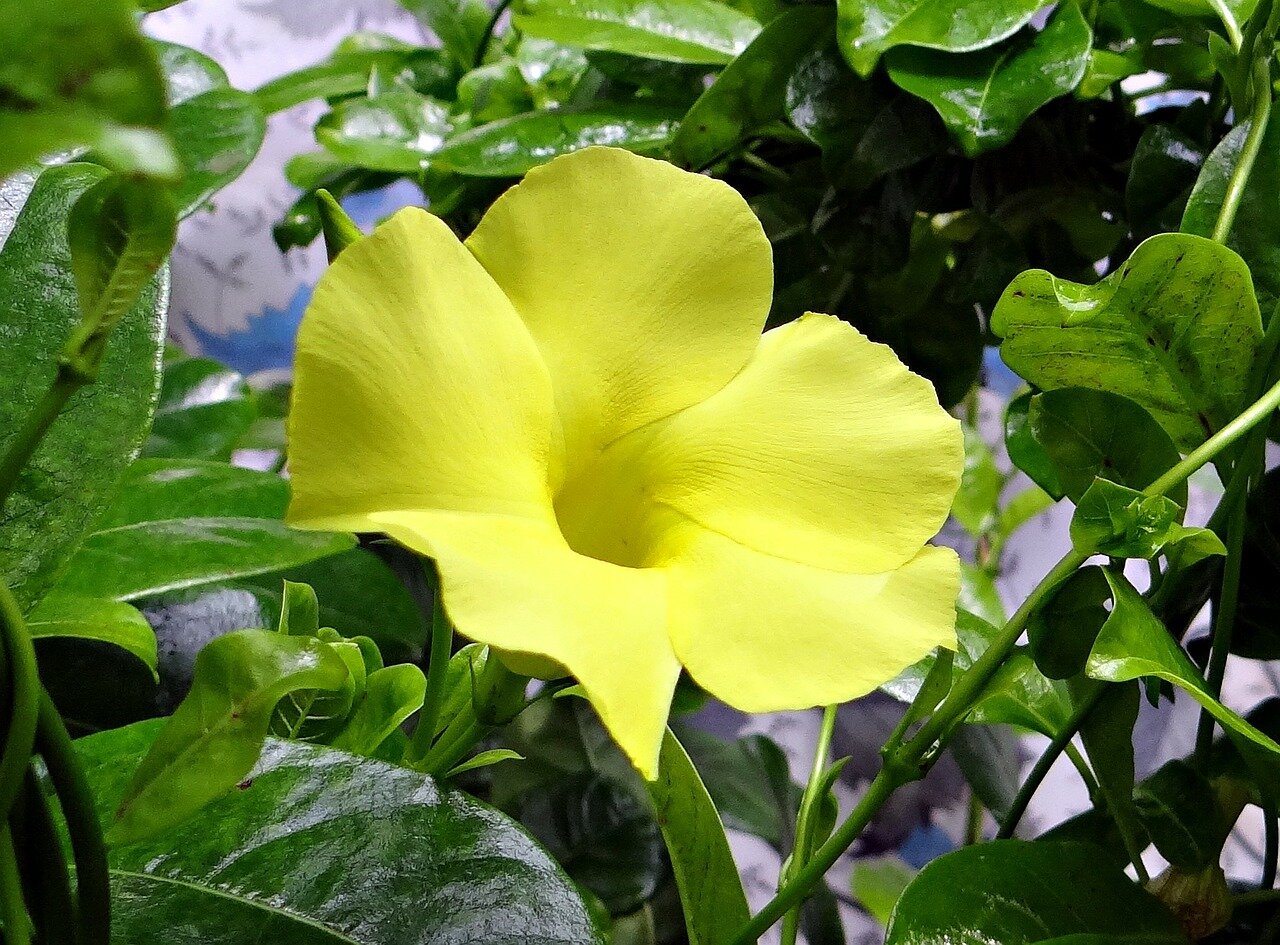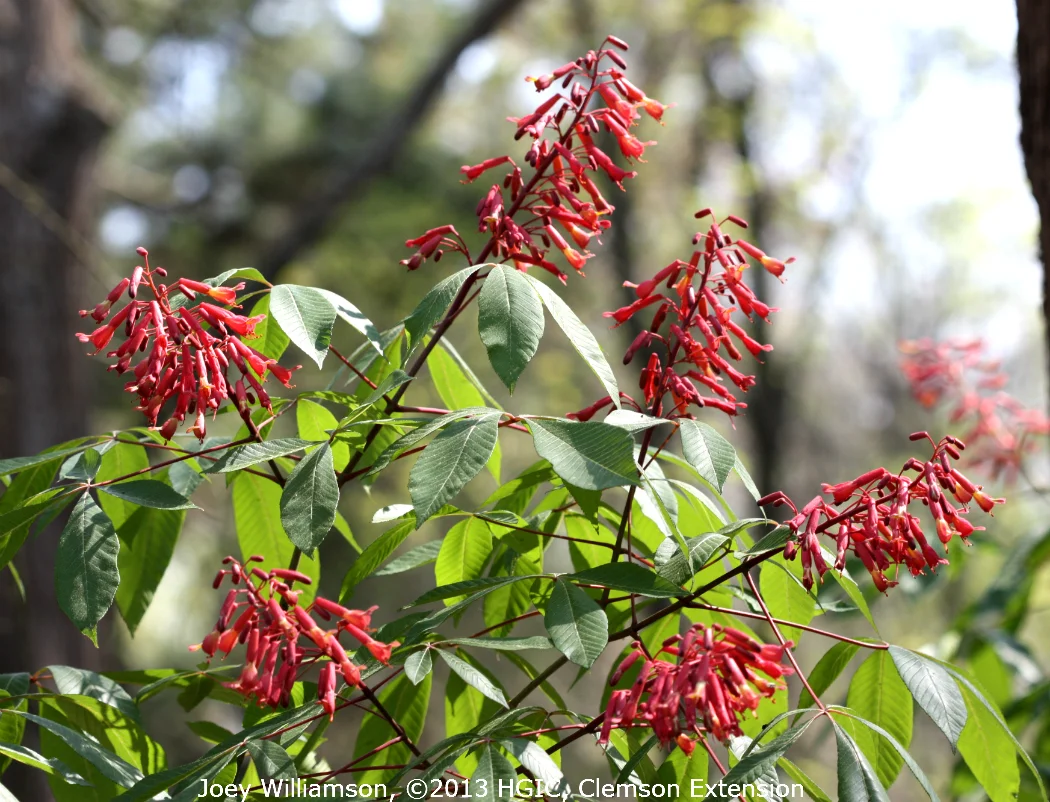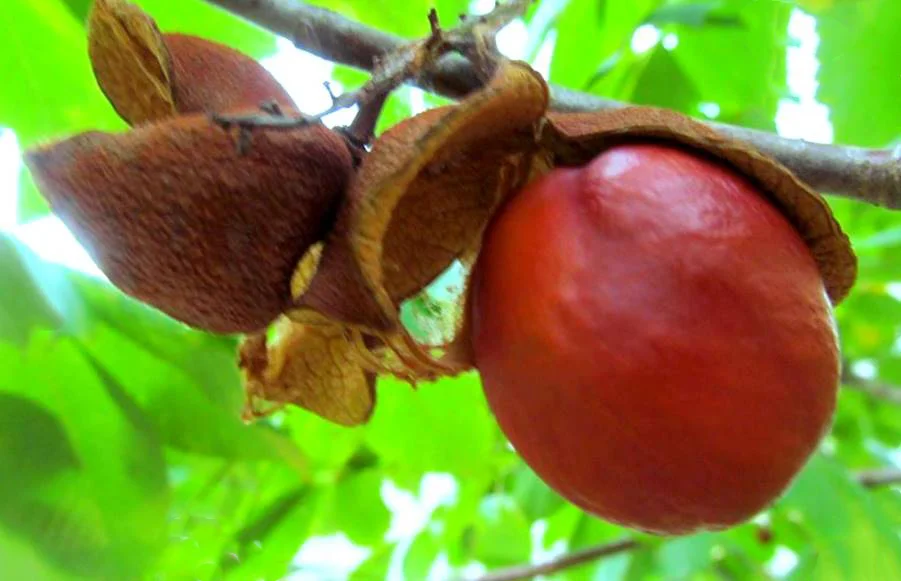I received a Mandevilla vine as a Mother’s Day gift this year. A wooden trellis was included. It dwarfed the plant. Fast forward two months, and this woody vine is a knockout! Healthy, dark green leaves set off the blood-red, tubular flowers to perfection. The vine has grown enough to cover the trellis without becoming aggressive.
Mandevilla (pronounced man-de-VILL-uh) has large, tubular blooms that attract hummingbirds. Mine is red but I have also seen pink, rose, yellow, and white in nurseries. The vine does not have suckers, but will twine gently around a supporting trellis. They make an ideal mailbox-post accent or hanging basket. Dipladenia (rhymes with Gardenia) is an upright, bushier form of Mandevilla that is now included into the Mandevilla genus. To confuse matters further, some were formerly labeled as Allamanda. The upright forms have smaller, more pointed leaves than the original, viney Mandevillas. All types enjoy rich, moist soil that drains rapidly. A mixture of potting soil, sand, and ground bark works well. Spent blooms fall off without any help from the gardener. Pinch the tips of vines to make plants fuller. In the southeast, Mandevillas will appreciate afternoon shade and frequent irrigation.
Mandevillas are warm weather plants, winter-hardy only in zones 10 and 11. This is why many of them are grown in containers, to facilitate bringing them indoors for winter. Container culture also restricts the mature size. Grown directly in the ground, a vine may reach 15-20 feet. In a container, it will rarely exceed 6 feet. When night temperatures drop to 50 degrees, Mandevilla can be brought indoors to a bright location (no direct sun) and enjoyed as a houseplant, although flowers are fewer than in summer. Water indoor plants sparingly, allowing soil to dry out while giving them a winter rest. Keep an eye out for aphids, whiteflies, mealy-bugs, and scale. Remove any dead or damaged leaves. Prune hard and apply liquid fertilizer when they return to an outdoor location in spring.
Mandevilla ‘Red Riding Hood’









